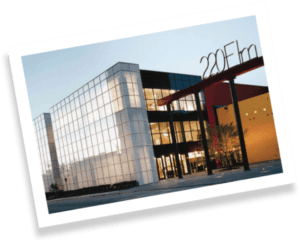To put things in perspective, imagine a city with more than 7.1 million people residing within 100 miles of the city’s center. Then place this city in the center of the nation’s 18th-largest urban area. Add state-of-the-art educational resources, quality educated students, informed citizens, and aggressive, energetic business people – and you have Charlotte, North Carolina. It’s easy to see why this bustling southern gem has become one of the fastest-growing metro areas in the country!
The Largest School District Serving Charlotte
By far the largest school system in the area is Charlotte-Mecklenburg Public Schools (CMS). Serving more than 148,000 students, CMS strives to assist students in graduating with the 21st-century skills that will prepare them for post-secondary success. Students come from 183 different countries and speak 197 native languages. The district has 175 schools (95 elementary schools, 46 middle schools, 31 high schools, and three alternative schools.) There is a broad spectrum of academic programs, nine magnet programs, and 47 schools that are either full or partial magnets. CMS also has ten specialized Career and Technical Education themes, six early and middle college schools, 35 schools with Advanced Placement courses, and 16 schools that offer the rigorous International Baccalaureate program.
In the 2017-2018 year, three-fourths of the district’s schools met or exceeded growth expectations. English Learners (EL) showed steady progress, with substantial increases in the EL graduation rate, reading in grades three through eight, and in science for grades five and eight. According to Superintendent Dr. Clayton M. Wilcox, “We want to do everything we can to help our young people realize their potential. Test scores are one tool to help us improve our efforts. But we are also mindful that behind those numbers are students and teachers working hard every day. We will continue to strengthen our schools so that every student has the opportunity for success.”
Charlotte-Mecklenburg Schools is a partner in 100Kin10, a multi-sector network to fuel the next generation of innovators. This national initiative seeks to recruit, prepare and retain 100,000 Science, Technology, Engineering and Math (STEM) teachers by 2021.
A Look At The Numbers
One of the largest employers in Mecklenburg County with more than 19,000 teachers, support staff, and administrators, CMS is fortunate to have tremendous support from Charlotte’s corporate, faith and business communities, and more than 90,000 mentors and volunteers that support learning and instruction. Charlotte-Mecklenburg Schools is also ranked fourth in the nation in the number of National Board-certified teachers, with 1,995 teachers.
CMS has a four-year cohort graduation rate of 85.4% with over 3,400 students earning scholarships totaling over $151 million. For students in the Career and Technical Education programs, the cohort graduation rate has exceeded 95% in past years. Twenty-two of CMS’s magnet schools have been recognized for excellence and distinction by the national Magnet Schools of America. On the National Assessment of Educational Progress (NAEP), often called the nation’s report card, Charlotte-Mecklenburg Schools has consistently been a top performer.
Quality Private Schools As Well
The region is not just home to great public schools; it is equally endowed with quality private schools. Niche website analyzes dozens of public data sets and millions of reviews to produce comprehensive rankings, report cards, and profiles for every K-12 school. In their 2019 list of the Top 10 Private High Schools in the Charlotte Metro Area, Niche included: Charlotte Catholic High School, Charlotte Christian School, Charlotte Country Day School, Charlotte Latin School, and Providence Day School (all in Charlotte), Cannon School (Concord), Covenant Day School (Matthews), Davidson Day School (Davidson), Gaston Day School (Gastonia), and Woodlawn School (Mooresville).
Surrounding School Districts
One of the largest employers in Cabarrus County, Cabarrus County Schools (CCS) is located about 20 miles northeast of Charlotte via I-85. Cabarrus County Schools currently educates 32,000 students – making it among the largest districts in North Carolina. A recent high point for the district was the dedication of their brand new, state-of-the-art school – Royal Oaks Elementary (ROE). ROE will be the first fine arts school in the district. CCS Superintendent, Dr. Chris Lowder, expressed his goal for both teachers and students in Cabarrus County. “What I want our district’s teachers to be are educators who know how to support and create nurturing environments for students while continuing to stretch their own and their students’ abilities.”
The ninth largest public schools district in North Carolina, Gaston County School System (GCSS) is just to the west of Charlotte. With more than 32,000 students, GCSS is also the second largest employer in Gaston County with more than 3,700 full-time and part-time employees, including 1,950 teachers. GCSS has 29 elementary/primary schools, one intermediate school, 11 middle schools, 11 high schools, one special needs school, an alternative school, and a virtual school (grades 4-9). Gaston County Schools is fully accredited by AdvancED and the Southern Association of Colleges and Schools as a quality school system.
Just to the north of Charlotte, Iredell-Statesville Schools (I-SS) ranks among the 20 largest school districts in North Carolina with more than 20,000 students. Student performance places Iredell-Statesville Schools among the top 25% of school districts in the state. I-SS SAT scores, graduation rate, and writing scores are among the best in North Carolina. In addition to traditional school settings, the district provides a wide range of exciting educational opportunities through choice programs designed explicitly for unique student needs. I-SS also has a rich history of successful early college programs including the Collaborative College for Technology and Leadership and Crossroads Science and Early College. The district has now also opened the state’s first early college devoted to agri-science – Agriculture & Science Early College.
Southeast of Charlotte are Union County Public Schools (UCPS). The sixth largest school system in the state, UCPS has 53 fully accredited schools and about 40,500 students. Agriculture and manufacturing are the most important industries in this, the state’s fastest-growing county.
The Charlotte-Mecklenburg region is unique in its proximity to not only quality school districts in North Carolina but to those in South Carolina. Both Lancaster County and York County schools (South Carolina) are an easy commute from the Charlotte-Mecklenburg region and have a great deal to offer in both public and private education selections.
Add Your Heading Text Here
Post high school (and in the case of some students who are in ‘early college programs’ during high school), preparation for the ‘real world’ is unprecedented in the region. Best known is the University of North Carolina at Charlotte (UNCC). The fastest-growing and third-largest university in North Carolina, UNCC is a large university with a small college feel. UNC Charlotte features seven academic colleges with 139 undergraduate majors and is one of the driving forces of growth, discovery, and innovation for the metro Carolinas.
The direct light-rail connection to Charlotte provides many opportunities for students to learn beyond the classroom through internships, networking, and research. US News & World Report has recognized UNCC as one of the ten most innovative colleges and universities in the country. UNCC also is noted for producing more start-up businesses than any other college or university.
Davidson College (located north of Charlotte in the town of Davidson) is in Zippia’s Top Ten Small Colleges of North Carolina (Zippia, Inc. operates a website that provides career information and tools for professionals across various industries). Zippia ranks schools using data from the National Center for Education Statistics and the College Scorecard to judge several aspects of each college critically. Davidson ranks among America’s most influential and selective liberal arts colleges and is alma mater to 23 Rhodes scholars. Davidson was also the first liberal arts college to eliminate loans from financial aid packages. Davidson’s graduation rate of 93% is by far the highest in North Carolina. They have a student-teacher ratio of 10:1 while offering 26 majors, 17 minors, plus Interdisciplinary Studies.
Zippia’s Top Small College in North Carolina once again included Cabarrus College of Health Sciences (CCoHS) in Concord. CCoHS is located on the campus of Carolinas HealthCare System NorthEast, the leading tertiary care center in the north Charlotte region. Small classes feature a student-focused learning environment, mentoring from exceptional faculty, coupled with ‘real-world’ experience. Cabarrus College graduates earn the 2nd-highest salaries in the state for all small colleges. A 31% admission rate means exclusivity, while the cost remains the 3rd lowest, meaning students get more for their money. It’s an excellent choice for women’s studies, as about 9 in 10 students at CCoHS are female.
Another Charlotte-Mecklenburg area Zippia Top Small College in North Carolina is Catawba College, located halfway between Charlotte and High Point. Established by the United Church of Christ nearly 170 years ago, Catawba College is a private, coeducational, residential, institution with a 13:1 student-faculty ratio. Catawba offers career preparation grounded in liberal arts with over 70 academic fields of study including strong science and pre-professional programs.
Within a 20-mile radius of Charlotte are a significant number of top colleges and universities like Johnson C. Smith University (JCSU), an independent, urban university that continues to gain a national reputation.Another great school example (and the only Catholic college between northern Virginia and Florida) is Belmont Abbey College (BAC). First Things Magazine recently named the Abbey America’s #1 School on the Rise, Filled with Excitement. They have also received a Top-Tier Ranking by U.S. News and World Report, and recently BAC was named a Best Southeastern College by The Princeton Review.




